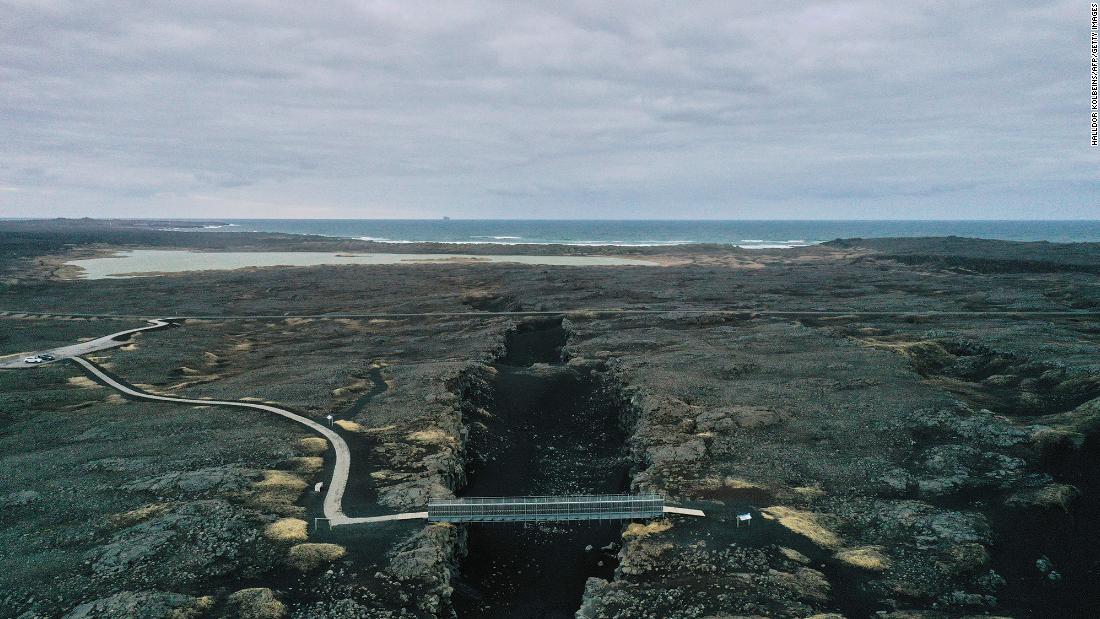The biggest earthquake, magnitude 5.6 on the Richter scale, occurred on the morning of February 24. It was the strongest of a swarm that continues to shake residents of the capital Reykjavík and the municipalities around it, where two-thirds of the Icelandic population lives. Two major earthquakes – with a magnitude of 5.0 – also occurred on February 27 and March 1.
The earthquakes have done little damage so far, although the Icelandic Coast and Road Administration has reported minor road cracks in the area and rock falls on steep slopes near the epicenter of the swarm.
In the fishing town of Grindavík, the locals had a front row seat for the tremors. “I have never experienced anything like this before,” said Páll Valur Björnsson, who teaches at the local Faculty of Fisheries and serves as a parliamentary deputy.
“We are used to it; it started a year ago. But it is much more now – very unsettling. I am not afraid, but this is uncomfortable. I woke up twice last night because of [tremors]. There was a very big one when I went to sleep and woke up with one. It is difficult, but you have to learn to live with it, “he said.
Only this time, there seems to be no end to the noise under the ground.
Þorvaldur Þórðarson, a professor of volcanology at the University of Iceland, said concerns about recent activity were understandable. “Of course it worries people. For this region, this is quite unusual, not because of the type of earthquakes or their intensity, but because of their duration. It has been going on for over a week.”
“We are struggling with ‘why’ at the moment. Why is this happening? It is very likely that we will have an intrusion of magma into the [Earth’s] crust there. It has definitely approached the surface, but we are trying to find out if it is moving even closer, “he said. With several volcanoes in the area, local authorities have warned that an eruption could be imminent.
Elísabet Pálmadóttir, a natural hazards specialist at the Icelandic Meteorological Office, told CNN that authorities are installing surveillance equipment in the area, from GPS and earthquake monitors to web cameras and gas detectors.
She also does not remember having experienced so many earthquakes in such a long period of time. She warns that a more powerful event may be a cause for concern and estimates that the area may suffer an earthquake of magnitude 6 or greater.
“In this particular area, where we saw activity last week, we could experience a magnitude 6.0 earthquake. But we could have a 6.5 east of the area, east of Lake Kleifarvatn, ”she says.
No city appears to be at risk for lava flows in the event of a volcanic eruption, according to the latest modeling by the University of Iceland’s Volcanology and Natural Hazards Group, which released maps of potential flows on Wednesday.
“Based on the current model, no major city is in danger,” volcanologist Ármann Höskuldsson told CNN, adding that Keflavík International Airport – one of the most direct connections between Iceland and the rest of the world – would also be spared.
However, the main road connecting the airport to the capital, Reykjavík, could be affected, as well as some transmission lines, he added.
Pálmadóttir notes that such models do not take into account possible dangerous gases that could be emitted by a volcanic eruption.
Þórðarson adds that “the composition of the magma here is very different, the intensity of the explosive activity would be significantly less.”
On Wednesday afternoon, a quake near the Keilir volcano, just 20 miles south of the capital, prompted authorities to ban traffic in the area. On its website, Iceland’s MET office said similar activities preceded the eruptions.
Víðir Reynisson, Chief Superintendent of Iceland’s Department of Civil Protection and Emergency Management, said at a news conference on Wednesday that an outbreak was “more likely than not” in the coming hours. It would be the first in the area since the 12th century.
For now, residents are waiting for signs of an eruption, some with excitement, others with anxiety. Víkurfréttir, a local news service, installed a video camera pointing at Keilir, which will begin broadcasting live if an eruption begins.
In the past 24 hours, major earthquakes felt that previous days had largely subsided – but the current lull may not last long. “It’s definitely not over,” says Pálmadóttir.
